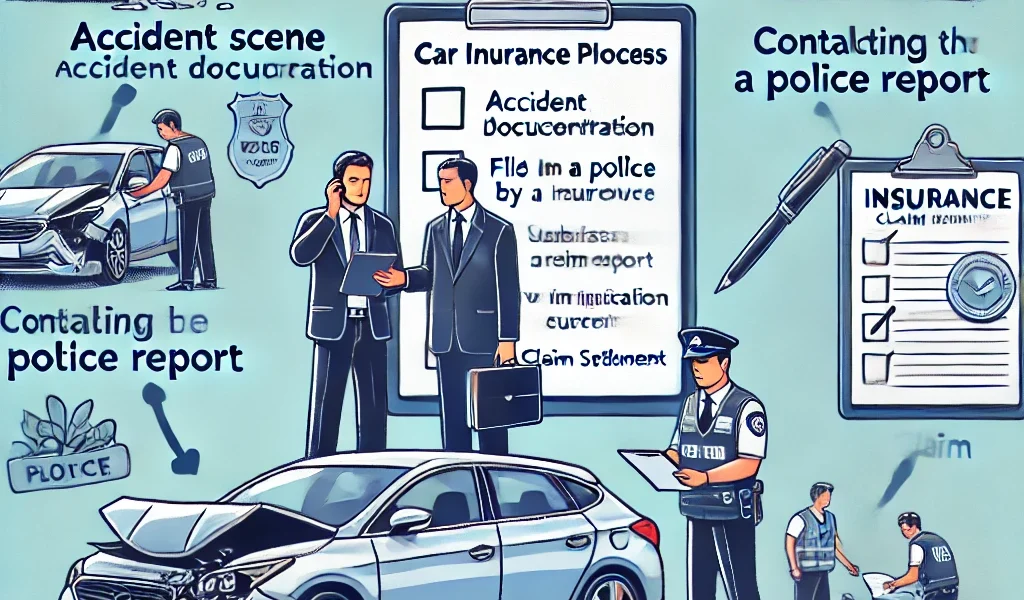accideCarnts and vehicle damages can be stressful, but knowing how to file a car insurance claim can make the process smoother and help you receive compensation efficiently. This step-by-step guide provides a clear understanding of how to file a car insurance claim legally and correctly while avoiding common pitfalls.
What is a Car Insurance Claim?
A car insurance claim is a formal request you make to your insurance company to compensate for damages, theft, or third-party liabilities as per your policy coverage. Filing a claim correctly ensures that you get financial support in times of need.
Types of Car Insurance Claims
Before filing, it’s crucial to understand the types of claims you can make:
- Own Damage Claim – For damages caused to your car due to an accident, fire, natural calamities, etc.
- Third-Party Claim – If your car causes damage or injury to another person or property.
- Theft Claim – When your car is stolen and not recovered.
- Personal Accident Claim – For injuries or death of the driver-owner in an accident.
Step-by-Step Guide to Filing a Car Insurance Claim
Step 1: Ensure Safety and Medical Attention
If an accident occurs:
- Check for injuries – If there are injuries, seek medical help immediately.
- Move to a safe location – If possible, move your vehicle to avoid further damage.
- Contact authorities – Report the accident to the police if required.
Step 2: Notify Your Insurance Provider
- Inform your insurer about the accident or damage immediately.
- Most insurers have a 24/7 helpline for claim intimation.
- Provide details like policy number, accident date/time, and location.
Step 3: File a Police Report (If Required)
- FIR (First Information Report) is mandatory for theft, third-party claims, or major accidents.
- Some insurers require a police report for fire damage or significant accidents.
- Obtain a copy of the FIR for documentation.
Step 4: Document the Damage
- Take clear photographs of the accident scene, vehicle damage, and any third-party involvement.
- Gather eyewitness details if available.
- Preserve all bills/receipts related to vehicle repair or medical expenses.
Step 5: Submit the Required Documents
You will need to submit:
- Duly filled claim form (available on the insurer’s website or office)
- Copy of your car insurance policy
- FIR copy (if applicable)
- Photos of damage and accident site
- Driving license and vehicle registration certificate (RC)
- Repair cost estimates from an authorized garage
Step 6: Survey and Claim Assessment
- The insurer will send a surveyor to inspect the vehicle damage.
- Based on the surveyor’s report, the claim amount will be processed.
- If it’s a cashless claim, the insurer will directly settle the bill with the authorized garage.
Step 7: Claim Settlement and Repair
- If it’s a reimbursement claim, you need to pay the repair cost first and then submit the bills for reimbursement.
- Insurers usually take 7-15 days for processing, depending on the case.
- The claim amount depends on the policy coverage, deductibles, and insurer’s terms.
Common Mistakes to Avoid While Filing a Claim
- Delaying the claim intimation – Always report the incident promptly.
- Not filing an FIR when required – Can lead to claim rejection.
- Providing incomplete or false information – May result in legal complications.
- Repairing the car before the survey – This can make claim approval difficult.
- Ignoring policy exclusions – Read the fine print to understand what is covered.
How to Speed Up Your Claim Process?
- Keep all documents ready – Missing paperwork can cause delays.
- Follow up regularly – Check claim status via your insurer’s website or customer support.
- Choose cashless garages – Insurers process cashless claims faster than reimbursements.
Legal Considerations When Filing a Car Insurance Claim
To avoid legal issues:
- Provide accurate information – Any false claim can lead to legal action.
- Do not admit fault prematurely – Let the authorities determine liability.
- Understand claim settlement terms – Ensure clarity on deductibles and coverage limits.
- Do not sign blank or unclear documents – Always read the terms before signing.
Final Thoughts
Filing a car insurance claim can seem complicated, but by following these steps and understanding your policy coverage, you can ensure a smooth and stress-free process. Stay informed, document everything, and reach out to your insurance provider for guidance when needed.
By following this DIY guide, you can confidently navigate the claim process without unnecessary delays or complications.
Have any questions about car insurance claims? Drop a comment below!
